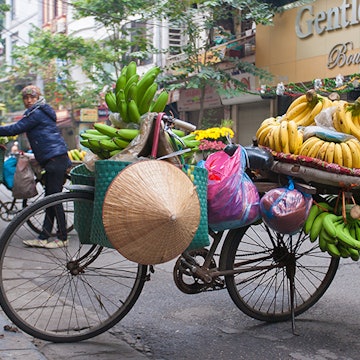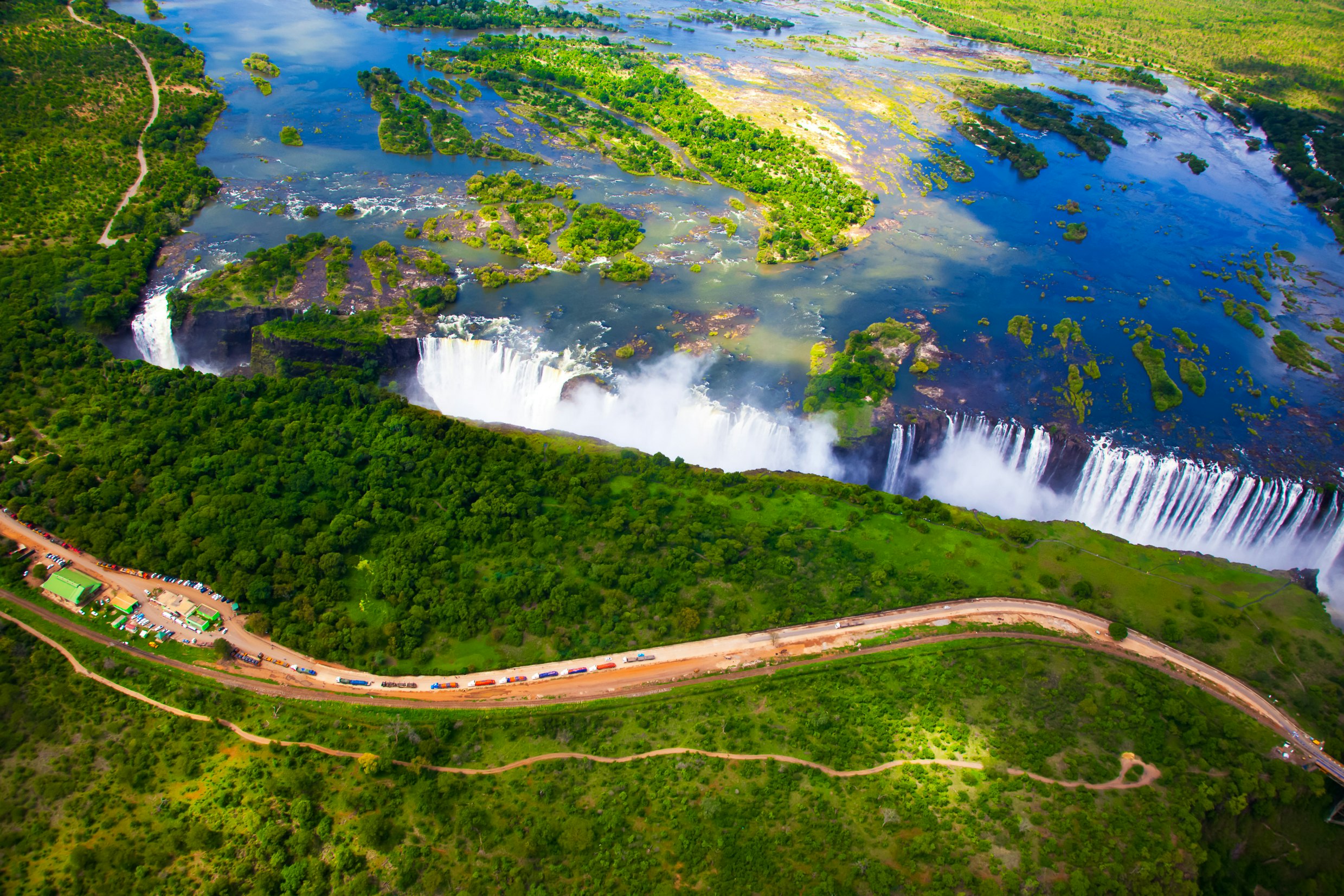
Ultimate travel list: Lonely Planet's top sights in the world (21 to 30)
Aug 17, 2015 • 6 min read

Dubrovnik’s fortifications are familiar to many as King’s Landing in the hit TV show Game of Thrones. Martin Charles Hatch / Shutterstock
From the salt flats of Bolivia's Salar de Uyuni to the chaos of Morocco’s most famous square, our definitive assortment of showstopping, jaw-dropping sights just keeps on stirring up a storm of wanderlust.
Want ancient marvels? No problem. Raw natural beauty? We’ve got you covered with our ultimate travel list. Let’s hope you have a few spare pages left in your passport – you’ll be needing them...
21. Yosemite National Park, USA
Could Yosemite National Park be the world’s most enduring rock star? It’s a place where countless waterfalls burst out of the mountains, giant sequoias scratch at the sky, and bears roam the expanses (and often the camping grounds). But it’s the rocks that are Yosemite’s undisputed royalty.
Everywhere you look, sheer granite domes bubble up from the land. Half Dome hovers like a vast rock wave about to break over Yosemite Valley, and the ominous sentinel of El Capitan guards the entrance to the valley.
22. Dubrovnik old city walls, Croatia
23. Salar de Uyuni, Bolivia

Licking the walls is strictly prohibited in the Palacio de Sal. Constructed from salt, the hotel wouldn’t survive long if everyone got inquisitive with their tongues, and besides, it’s bad for your heart – so you’ll have to trust us. Walls, floors, ceilings, furniture, even the sculptures – all salt. Over a million blocks of the stuff. And the view – that’s all salt too. Welcome to Bolivia’s Salar de Uyuni, the planet’s biggest salt lake.
For 10,582 sq km there’s virtually nothing to see here – not even a horizon – but you’ve never seen anything half as surreal as this, especially if you score a tour when there’s a layer of water on the surface, transforming the floor into a mirror and convincing your frontal cortex that you’re travelling through the middle of the sky.
24. Bagan, Myanmar

Some places earn a position on this list through their incomprehensible scale, others through dazzling ornateness. But Bagan is an exception: emphatically winning at both. A religious site to be mentioned in the same breath as Machu Picchu or Angkor, Bagan is a complex of Buddhist pagodas – a whopping 2200 of them on the banks of the Irrawaddy River.
Largely constructed between the 11th and 13th centuries by a dynasty of zealous temple-building kings, the pagodas come in all shapes, sizes and colours. Some, such as the Shwezigon pagoda, sparkle an ethereal gold in the sunset, whereas others such as the Ananda Temple are home to tall, serene Buddha statues. A few, the Shwesandaw pagoda for instance, have terraces with views over all Bagan – a vista of temples interspersed with shady copses and verdant farmland. And then there are innumerable others almost invisible among the undergrowth: places that go days without hearing the footfall of visitors.
25. Pyramids of Giza, Egypt

Why aren’t the Pyramids closer to the top? After all, they’re the world’s oldest tourist attraction, and remain truly awe-inspiring. The Great Pyramid of Giza clocked a 3800-year stint as the world’s tallest building, while just down the road is the Sphinx, one of the oldest and largest statues in the world.
The answer to their relatively lowly position in the list might lie in those same sands of time. Found on the edge of sprawling Cairo, the Pyramids remain a magnet for would-be guides and hawkers. Plenty of world-class sights make a better fist of explaining and showcasing the wonders on offer.
26. Piazza San Marco, Italy

Don’t worry – the waiter in Caffè Florian has seen you. He’ll just take his sweet time preening himself before letting you order a staggeringly overpriced coffee. Think about it this way: you’re in Italy’s oldest cafe, in Europe’s most famous public space – sitting pretty, where much-fêted members of the Old World aristocracy and literati once flounced during their Grand Tour.
Napoleon called the Piazza the ’drawing room of Europe’ when he invaded in 1797, and even the Little Corporal was probably left waiting for his Venetian tea. It’s pointless staring impatiently at that famous clock tower. The camerieri (waiters) rush for no-one, which gives you time to drink in your surrounds.
27. Victoria Falls, Zimbabwe

With all due respect to other waterfalls, this is more than just a load of tumbling water. That’s not to say the falls aren’t spectacular. Whether viewed from the Zimbabwe or Zambia side, this relentless wave is an ear-assaulting, drenching flood of one remarkable view after another. That’s if you come in the dry season: in the wet your visit will be even wetter and louder.
What distinguishes Mosi-Oa-Tunya (The Smoke That Thunders) is the wealth of wonderful activities on offer once you’ve seen the falls. Wildlife flocks to the Zambezi River and elephant, rhino and buffalo are among the big-ticket draws.
28. Acropolis, Greece

Considering it’s been variously attacked, plundered, sacked, placed under siege and set ablaze by the Goths, Herulians, Persians, Venetians and Romans – not to mention vandalic restorers and a rapacious army of tourists – it’s a wonder there’s anything left of the Acropolis to gape at. But there is. Loads.
When you walk amid the ruins of the Parthenon (one of three temples dating from the 5th century BC), the Odeon of Athens and Theatre of Dionysus, you don’t need a Tardis to travel through time.
29. Chateau de Versailles, France

How many abodes in the world have 700 rooms, 2153 windows, 67 staircases, 800 hectares of garden, 2100 statues and sculptures, and enough paintings to pave an 11km road? It’s the ultimate crash pad: the Chateau de Versailles. And what is possibly even more mesmerising than this building’s extreme size is the ostentatious opulence that pervades every last brick and baroque, egg-and-dart carved cornice.
French ’Sun King’ Louis XIV transformed his father’s humble hunting lodge southwest of Paris into a monumental palace to house his 6000 sycophantic courtiers in the 17th century. It was the kingdom’s political capital and seat of the royal court from 1682 until the French Revolution in 1789. Today a Unesco World Heritage site, the royal residence is a glittering evocation of French royal history and the conspiring, romancing, plotting, intrigue and back-stabbing drama that went on behind royal doors.
30. Djemaa el-Fna, Morocco

Chaotic and enchanting in equal measures, Djemaa el-Fna is the vibrant heart of Marrakesh. This main square is a hub of hoopla, halqa (street theatre) and hikayat (oral storytelling) that has been thriving since medieval times. During the day, soothsayers and snake-charmers patrol the pavement along with a ragtag assortment of hawkers, henna tattoo artists and rather dubious dentists. Once the sun sets, the square transforms into a mashup of music and mayhem that is part circus and bawdy vaudeville act, and part open-air concert.
Unesco proclaimed the Djemaa a ’Masterpiece of World Heritage’ in 2001. Weave through the tutu-clad monkeys and cross-dressing belly dancers to search out a storyteller telling a tale or a Gnaoua musician hypnotising a huddle of spectators, and you’ll understand why.
So what could possibly top this little lot? Find out by exploring the sights ranked 11-20. Want to dig deeper into our top 50? Read on for a rundown of the spots ranked 31-40. View the complete list of the 500 best sights on the planet in our new title Ultimate Travel, which is available now in Lonely Planet's shop and where books are sold.












